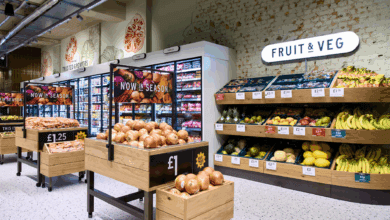Feeling the squeeze: how to fight falling profits and rising costs

Register to get 1 free article
Reveal the article below by registering for our email newsletter.
Want unlimited access? View Plans
Already have an account? Sign in
The boom in e-commerce over the last few years has altered the way we shop beyond recognition and the fast pace only looks set to increase. But this rapid transformation has come at a cost to retailers.
Profit margins are being squeezed ever tighter as they find themselves under pressure to deliver across multiple channels and fulfil customer demand. Over the last few months, a series of UK retailers went public with their struggles to remain profitable. UK fashion retailer New Look saw its sales fall 8.4 % during the last half of 2017, equating to a loss of £10.4m.
Meanwhile, Marks & Spencer announced it would be closing 14 more stores over the coming months, whilst other British retailers including Toys R Us made similar reveals, with the toy retailer confirming the closure of a quarter of its stores in December of last year.
Profitability challenges
A combination of factors are conflating to put pressure on the bottom line; escalating delivery and fulfilment costs, the strain of handling huge returns, the cost of e-commerce investment and delivering functionality across all devices, as well as the uncertain and unpredictable effects of Brexit.
Regardless of whether the retailer is a high-street stalwart, a medium-sized store or an e-commerce pioneer, the issue of profitability is being felt by all. When faced with a similar situation in the past, the airline industry looked to secondary revenue beyond their core proposition in a bid to remain profitable and ease falling margins on primary revenue streams. This materialised through the introduction of ‘add-ons’ such as travel insurance, car hire and a fee for choosing preferred seats.
With this in mind, we recently partnered with the British Retail Consortium (BRC) to produce the report ‘Beyond the Core’ in an attempt to understand this challenge of boosting profits and identify how retailers are exploring secondary revenue options.
The possibilities are endless but awareness is low
From affiliate marketing, to selling advertising space, cross-selling additional products and services and offering loyalty and reward programmes, our study revealed that these are just some of the key secondary revenue methods that are being employed. In fact, two thirds of retailers are using secondary revenue, with some businesses achieving more than 40% of revenues in this way.
Interestingly, despite the high adoption, there seems to be little awareness of the term itself. Only 26% of retailers were aware of their business having a secondary revenue strategy in place.
With the rapid development of online retail, this presents a chance for retailers to fight the margin squeeze whilst enhancing customer experience. For example, by directing a customer to an affiliate link, a retailer can provide the shopper with interesting and complimentary new services, while also receiving commission. Or by offering a customer the opportunity to sign up to a cashback programme, the retailer can help them save money on future purchases.
Edwina Dunn, CEO at Starcount, says: “Loyalty programmes can also drive secondary revenue as they provide the retailer with additional information about their customer, allowing them to cross-sell while also obtaining a group of loyal customers who will continue to spend with the company.”
Even with these mutual benefits created by secondary revenue, there remains a need for greater awareness of the term for it to be incorporated into solid business strategy.
Implementing secondary revenue methods
Regardless of how many secondary revenue methods are used, it’s important that they align with a brand’s values and offer customer benefits that are relevant, at the right stage of the customer journey. Ultimately, while all secondary revenue streams should fit together seamlessly, they can often sit across multiple departments and from our research, the most profitable outcome comes through the sales route.
Secondary revenue programmes should also have little-to-low cost to effectively raise profit margins, whether working with an ecosystem of third parties, using an internal programme, or a blend of both. Furthermore, working with a third-party should be considered, as the 74% of retailers who are reported that their efforts were successful.
The retail industry is changing, so the industry has no choice but to keep pace with consumers’ growing expectations and demands. But the fact remains, with these growing expectations and demands, profitability is negatively impacted.
Sinead Finn, director at Affinity, says: “Secondary revenue needs to be at the forefront of retailer’s minds and on the boardroom agenda, it is the CEO’s who take secondary revenue seriously that will be successful.”
They can be a smart option for retailers to try and beat rising costs and falling margins, without taking drastic measures like cutting jobs or closing stores. In this rapidly changing and challenging environment, one thing is clear – retailers most likely to survive this storm are those thinking beyond the core.
Webloyalty is a trusted partner to over 200 of the world’s leading retail and travel brands, and are experts in providing valuable online savings programmes for consumers.







